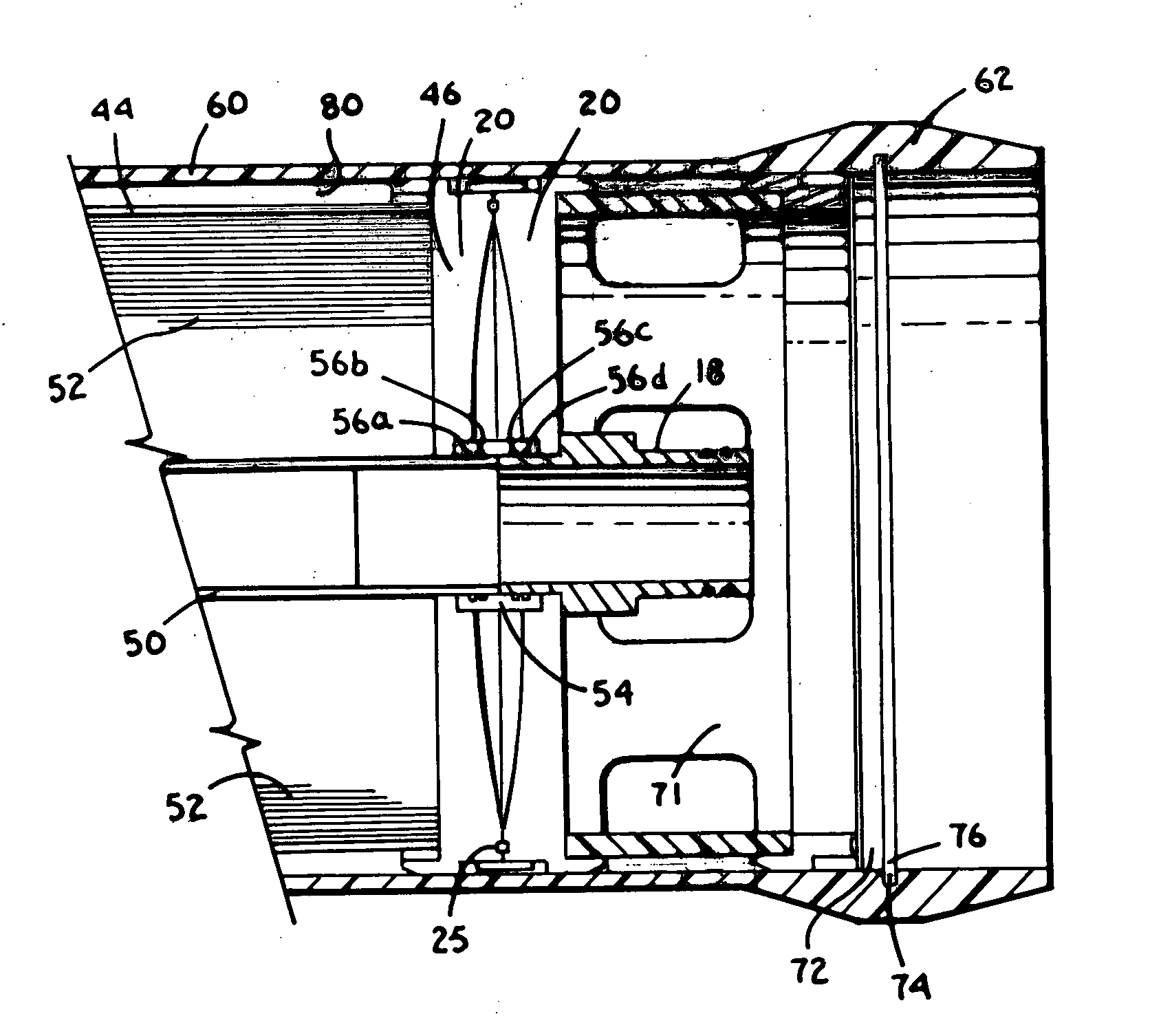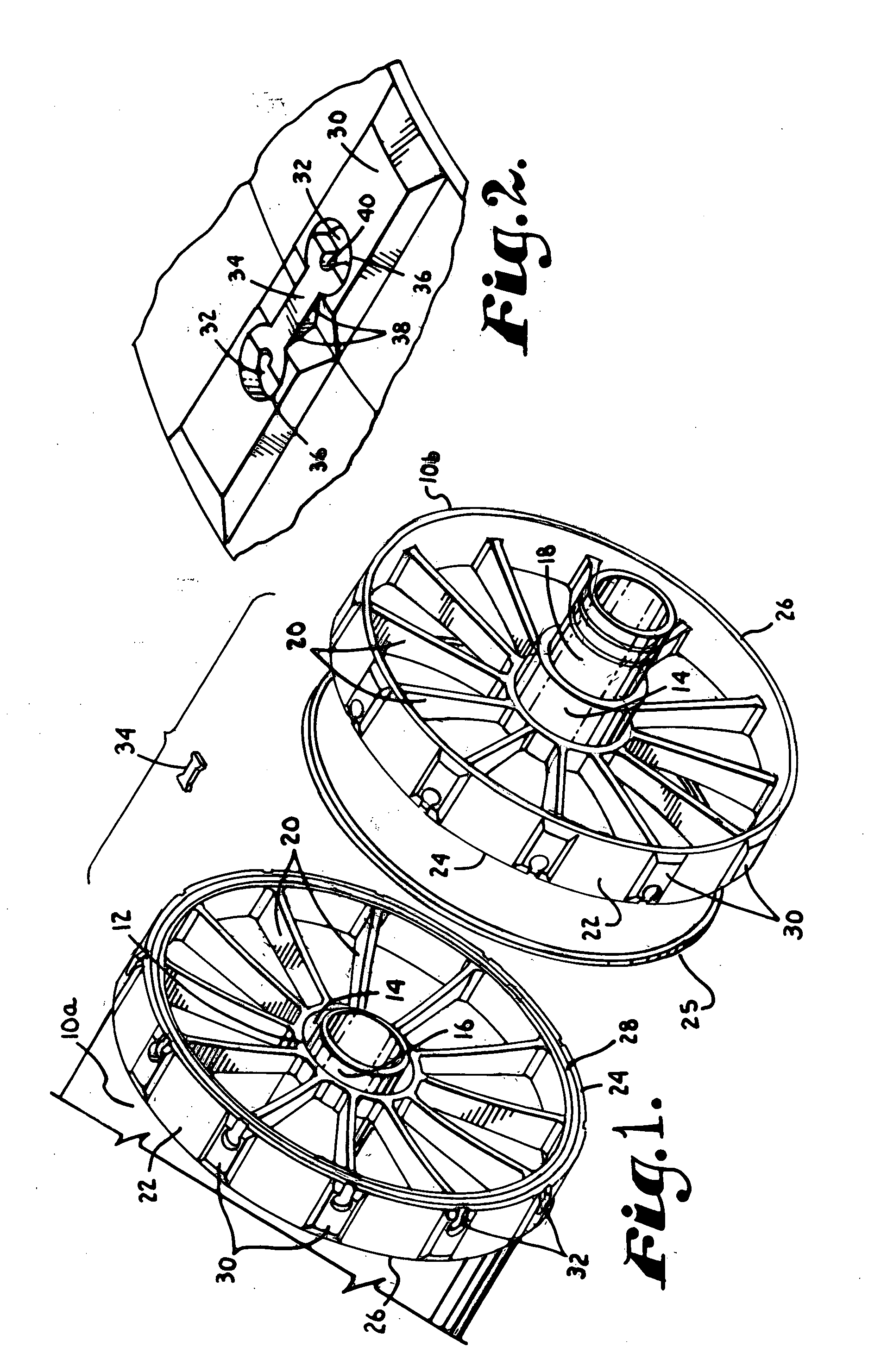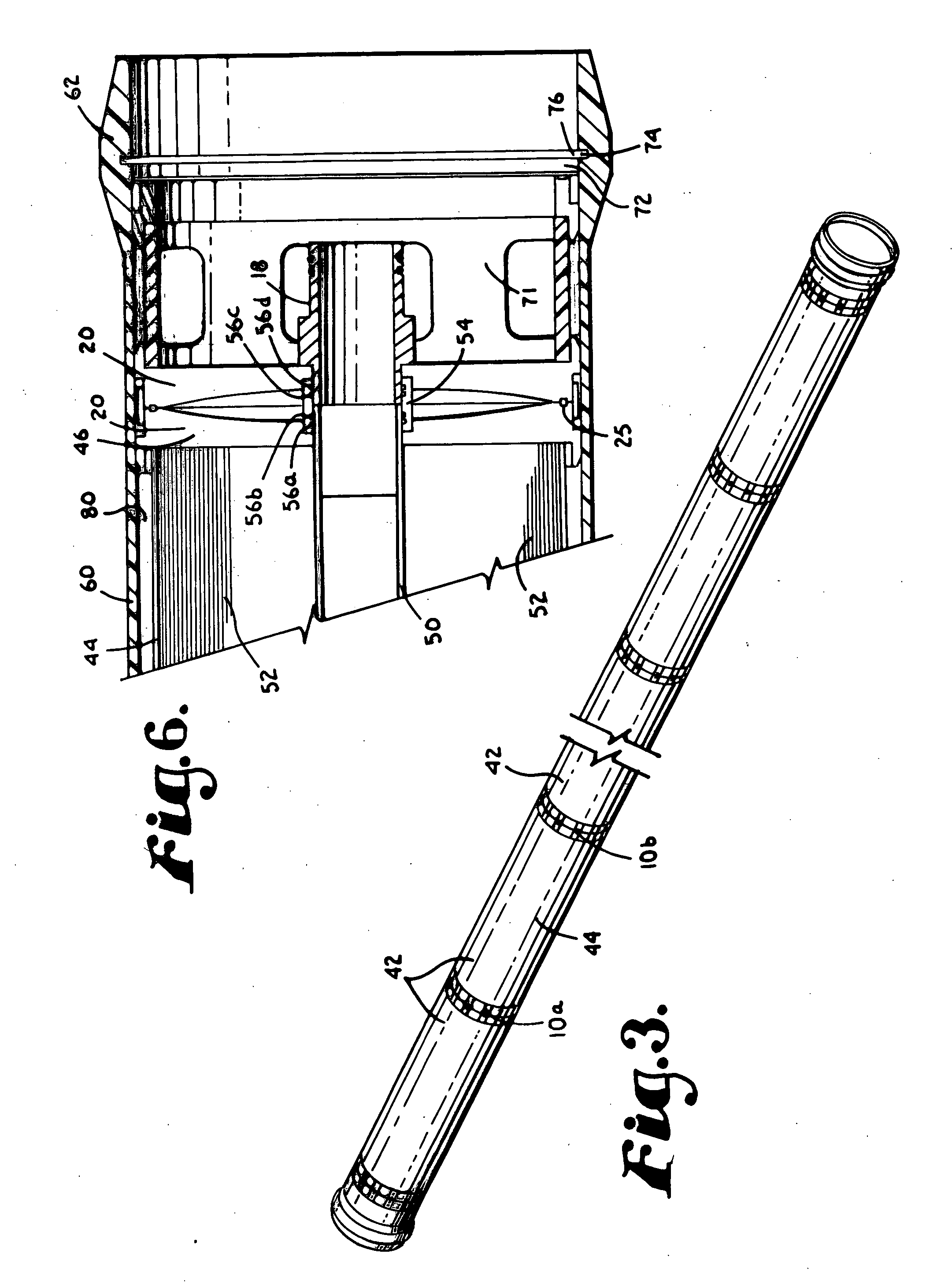Filtration element and method of constructing a filtration assembly
a technology of filtration elements and components, applied in the field of coupling, can solve the problems of imposing significant restrictions on filtration capability, difficult to insert or pull the element into the housing, or to remove it when necessary for inspection or replacement, and compound drawbacks, so as to facilitate and securely coupling the filtration element, prevent decoupling, and minimize the contact area of the brin
- Summary
- Abstract
- Description
- Claims
- Application Information
AI Technical Summary
Benefits of technology
Problems solved by technology
Method used
Image
Examples
Embodiment Construction
[0024] Couplers in accordance with an exemplary embodiment of the present invention are depicted in FIG. 1. Each coupler 10a, 10b includes a cylindrical center support 12 having an inner surface defining a circular opening 14. As shown, a permeate tube 16, typically combined with a permeate adapter 18 may pass through circular opening 14. Spokes 20 extend radially outward from the outer surface of center support 12 to the inner surface of a cylindrical rim 22 which encircles and joins to the outer ends of spokes 20. As can be better seen in the cross-sectional view of FIG. 6, the front edge of each spoke 20 has a slightly concave taper, with the rear edge of each spoke 20 being substantially straight. Returning to FIG. 1, rim 22 has outer and inner rim faces 24, 26. A generally U-shaped channel 28 extends around the perimeter of outer face 24 for receiving a complementary configured compressible seal 25.
[0025] Looking still to FIG. 1, raised pads or skis 30 extend around the outer ...
PUM
| Property | Measurement | Unit |
|---|---|---|
| radius | aaaaa | aaaaa |
| compressible | aaaaa | aaaaa |
| cross-sectional dimension | aaaaa | aaaaa |
Abstract
Description
Claims
Application Information
 Login to View More
Login to View More - R&D
- Intellectual Property
- Life Sciences
- Materials
- Tech Scout
- Unparalleled Data Quality
- Higher Quality Content
- 60% Fewer Hallucinations
Browse by: Latest US Patents, China's latest patents, Technical Efficacy Thesaurus, Application Domain, Technology Topic, Popular Technical Reports.
© 2025 PatSnap. All rights reserved.Legal|Privacy policy|Modern Slavery Act Transparency Statement|Sitemap|About US| Contact US: help@patsnap.com



